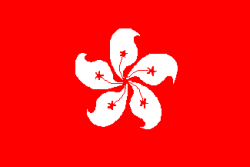| Date | Venue | Event | Highlight |
| 11 to 13 Nov 2009 | The Phoenix Convention Center, Phoenix, Arizona, USA | Greenbuild International Conference and Expo | Al Gore to give keynote speech Watch official video at youtube |
| 24 & 25 Nov 2009 | Berlin, Germany | 4th International Renewable Energy Storage Conference IRES 2009 | |
| 21 to 24 Feb 2010 | Melbourne Convention Centre, Melbourne, Austrialia | Green Cities 2010 | |
| 24 to 26 Feb 2010 | Sandton Convention Centre, South Africa | Energy Solutions for Africa Conference & Exhibition | |
| 2 to 4 Mar 2010 | Earls Court, London, UK | EcoBuild 2010 | |
| 19 & 20 May 2010 | Aberdeen, UK | All-Energy Exhibition & Conference 2010 | |
| 16 to 18 May 2010 | Raleigh Convention Center, Raleigh, NC, USA | National Green Building Conference | |
| 15-17 Sep 2010 | Walter E. Washington Convention Center. Washington, D.C., USA | A.R.E. Green Expo 2010 | Alternative Renewable Energy |
Sunday, November 1, 2009
Upcoming Green Events
Labels:
Environmental
Thursday, February 5, 2009
2009 Top Table Tennis Player
2009 Top Table Tennis Player
[Ranking from International Table Tennis Federation (ITTF) as of Feb 2009]
Female Players
Male Players
[Ranking from International Table Tennis Federation (ITTF) as of Feb 2009]
Female Players
Male Players
Labels:
Knowledge (Sports)
Wednesday, February 4, 2009
Extreme Mammals
Largest Mammal (in Sea, in the World, Current, Ever)
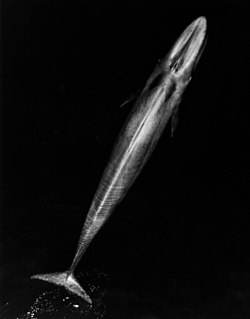
An adult Blue Whale
Scientific name: Balaenoptera musculus
Name: Blue Whale
Size: Up to 32.9 metres in length and weighs 172 metric tonnes
Habitat: North Atlantic and North Pacific (other subspecies live in Southern Ocean, Indian Ocean and South Pacific Ocean)
Remark: Endangered
Largest Mammal (on Land)

An African Bush Elephant
Scientific name: Loxodonta africana
Name: African Bush Elephant
Size: Up to 7.3 meters in length and 3.5 meters in height. Weighs up to 9,000 kg
Habitat: Eastern, Southern Africa (Forest and glasslands)
Remark: Near Threatened
Largest Mammal (on Land Ever)

Paraceratherium drawn by Charles R. Knight
Scientific name: Paraceratherium
Name: Paraceratherium
Size: Over 8m in length and up to 5.5 m tall at shoulder. Weighs over 10 metric tons to up to 20 metric tons.
Habitat: Many parts of Asia (Kazakhstan, Pakistan, India, Mongolia, and China) (Subtropical forests and woodlands)
Remark: Extinct. Exist during middle Oligocene to early Miocene, around 20 to 30 million years ago.
Smallest Mammal (by size or skull size)

Bumblebee Bat held by hand
Scientific name: Craseonycteris thonglongyai
Name: Kitti's Hog-nosed Bat or Bumblebee Bat
Size: 29–33 mm in length and 2 grams in mass
Habitat: Limestone caves along rivers, within dry evergreen or deciduous forests in Thailand and Burma
Remark: Group size in cave ranges from 10 to 15 individuals to up to 500. Average around 100.
Smallest Mammal (by weight)

Etruscan Shrew on hand
Scientific name: Suncus etruscus
Name: Etruscan Shrew
Size: 36 mm in length and 1.2–2.7 grams in mass
Habitat: Forests and brush areas between Southern Asia and Southern Europe
Remark: A forager with lifespan of 15 months
Smallest Mammal (in Sea)
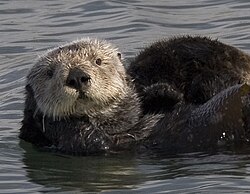
A Sea Otter in Morro Bay
Scientific name: Enhydra lutris
Name: Sea Otter
Size: 1.0 to 1.4m in length and weighs 14 to 45 kg
Habitat: Western Pacific Ocean, Alaska and California region
Remark: Endangered
Fastest Mammal (on Land)

A Cheetah
Scientific name: Acinonyx jubatus
Name: Cheetah
Speed: 112-120 km/h for short distance of 460m
Size: 115 to 135 cm in length and weighing 40 to 65 kg
Habitat: Forests and brush areas between Southern Asia and Southern Europe
Remark: Accelerate from 0 to 110 km/h in 3 seconds
Fastest Mammal (in Sea)
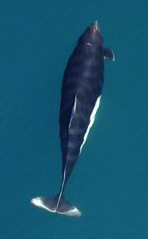
Dall's Porpoise
Scientific name: Phocoenoides dalli
Name: Dall's Porpoise
Speed: Up to 55 km/h
Size: 2.3m in length and weighing between 130 and 200 kg.
Habitat: North Pacific Ocean from southern California to southern Japan
Remark: Live for up to 15 years
Slowest Mammal
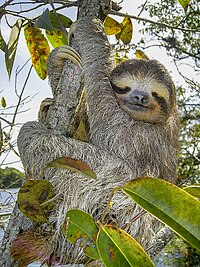
Brown-throated Sloth (Bradypus variegatus) (a species of three-toed sloth)
Scientific name: Bradypodidae
Name: Three-toed Sloth
Speed: Max speed is 0.54 meters per second, but most time sleeping or little movement
Size: 50 and 60 cm long
Habitat: Tropical rainforests of South and Central America
Remark: Omnivores. They could eat insects, small lizards and carrion, but their diet consists mostly of buds, tender shoots, and leaves, mainly of Cecropia trees

An adult Blue Whale
Scientific name: Balaenoptera musculus
Name: Blue Whale
Size: Up to 32.9 metres in length and weighs 172 metric tonnes
Habitat: North Atlantic and North Pacific (other subspecies live in Southern Ocean, Indian Ocean and South Pacific Ocean)
Remark: Endangered
Largest Mammal (on Land)

An African Bush Elephant
Scientific name: Loxodonta africana
Name: African Bush Elephant
Size: Up to 7.3 meters in length and 3.5 meters in height. Weighs up to 9,000 kg
Habitat: Eastern, Southern Africa (Forest and glasslands)
Remark: Near Threatened
Largest Mammal (on Land Ever)

Paraceratherium drawn by Charles R. Knight
Scientific name: Paraceratherium
Name: Paraceratherium
Size: Over 8m in length and up to 5.5 m tall at shoulder. Weighs over 10 metric tons to up to 20 metric tons.
Habitat: Many parts of Asia (Kazakhstan, Pakistan, India, Mongolia, and China) (Subtropical forests and woodlands)
Remark: Extinct. Exist during middle Oligocene to early Miocene, around 20 to 30 million years ago.
Smallest Mammal (by size or skull size)

Bumblebee Bat held by hand
Scientific name: Craseonycteris thonglongyai
Name: Kitti's Hog-nosed Bat or Bumblebee Bat
Size: 29–33 mm in length and 2 grams in mass
Habitat: Limestone caves along rivers, within dry evergreen or deciduous forests in Thailand and Burma
Remark: Group size in cave ranges from 10 to 15 individuals to up to 500. Average around 100.
Smallest Mammal (by weight)

Etruscan Shrew on hand
Scientific name: Suncus etruscus
Name: Etruscan Shrew
Size: 36 mm in length and 1.2–2.7 grams in mass
Habitat: Forests and brush areas between Southern Asia and Southern Europe
Remark: A forager with lifespan of 15 months
Smallest Mammal (in Sea)

A Sea Otter in Morro Bay
Scientific name: Enhydra lutris
Name: Sea Otter
Size: 1.0 to 1.4m in length and weighs 14 to 45 kg
Habitat: Western Pacific Ocean, Alaska and California region
Remark: Endangered
Fastest Mammal (on Land)

A Cheetah
Scientific name: Acinonyx jubatus
Name: Cheetah
Speed: 112-120 km/h for short distance of 460m
Size: 115 to 135 cm in length and weighing 40 to 65 kg
Habitat: Forests and brush areas between Southern Asia and Southern Europe
Remark: Accelerate from 0 to 110 km/h in 3 seconds
Fastest Mammal (in Sea)

Dall's Porpoise
Scientific name: Phocoenoides dalli
Name: Dall's Porpoise
Speed: Up to 55 km/h
Size: 2.3m in length and weighing between 130 and 200 kg.
Habitat: North Pacific Ocean from southern California to southern Japan
Remark: Live for up to 15 years
Slowest Mammal

Brown-throated Sloth (Bradypus variegatus) (a species of three-toed sloth)
Scientific name: Bradypodidae
Name: Three-toed Sloth
Speed: Max speed is 0.54 meters per second, but most time sleeping or little movement
Size: 50 and 60 cm long
Habitat: Tropical rainforests of South and Central America
Remark: Omnivores. They could eat insects, small lizards and carrion, but their diet consists mostly of buds, tender shoots, and leaves, mainly of Cecropia trees
Labels:
Knowledge (Organism)
Monday, February 2, 2009
When is Chinese New Year?
A simplified version on the date of Chinese New Year is given as followed
Some further notes:
- Chinese New Year must fall on a new moon. It means the beginning of things.
- It celebrates the beginning of spring so it must be a new moon close to solar terms Li Chun (立春). Since Li Chun (立春) fall around 4 Feb on Gregorian calendar. Chinese New Year will be the new moon near 4 Feb. Therefore, it ranges half a lunar month before and after 4 Feb. Data shows that it always fall between 21 Jan and 21 Feb.
- The determination of the date is based on time zone of 120 degree East (China's time zone).
Some further notes:
- Chinese calendar is a lunisolar calendar (considering both Sun and Moon's movement)
- A lunar month is around 29.53 days (therefore sometimes 30 days sometimes 29 days)
- A lunar year consisting of 12 lunar months is around 354.37 days which is around 11 days short of Gregorian calendar. Therefore, there is a leap month around every 3 years.
- Therefore, Chinese New Year is observed to fall around 11 days earlier each year for 2 years and then forward by 19 days on the third year. For example, this year Chinese New Year is on 26 Jan 2009. Taking 11 days away will fall out of 21 Jan 2009 range, so next year it will be around 19 days forward, that is around 14 Feb (which is in fact correct. 14 Feb 2010). So the year after next will be 11 days before, therefore around 3 Feb (which is correct again. 3 Feb 2011). In 2012, it will be 11 days before, therefore around 23 Jan (which is correct again. 23 Jan 2012). It may not always exact, allow 1 day difference as both Chinese calendar and Gregorian calendar require correction (Chinese - Leap month, Gregorian - Leap day).
Labels:
Knowledge (China)
Saturday, January 24, 2009
24 Solar Terms 二十四节气
The Chinese calendar is a lunisolar calendar that takes into account the movement of Sun and Moon. In a monthly basis, it follows the Moon's movement strictly while in a year basis, it follows the Sun's movement. That explains the reason for leap month after some time to correct the calendar.
The Chinese uses the Solar Terms (节气), which is a calendar of 24 periods and climate, to govern agricultural arrangements and functions in China. One of the significant similarity of Chinese calendar and Gregorian calendar is that both takes into account the longest (Summer Solstice) and the shortest days (Winter Solstice) of the year as well as two days eah year when the length of the day is equal to that of the night (Spring and Autumn Equinoxes).
During the Shang Dynasty, the Chinese had used only 4 solar terms. The number was increased to 8 during the Zhou Dynasty (11th century BC - 221BC). It was until the Western Han Dynasty (206BC - AD24) that the 24 terms were finally decided upon, which is the same as what it is today.
The 24 Solar Terms (二十四节气)
The date of Solar Terms are better described by the Gregorian Calendar as both follow the Sun's movement. However, there is a range of date for each terms as the Gregorian Calendar is not accurate on a year basis. (It has an error of around 6 hrs per year. That's why there is a leap day correction every 4 years and every 400 years)
Two important Solar Terms to the Chinese are the Pure Brightness (清明) and Winter Solstice (冬至) which happen around 5th Apr and 22nd Dec on Gregorian Calendar each year respectively.
The Chinese uses the Solar Terms (节气), which is a calendar of 24 periods and climate, to govern agricultural arrangements and functions in China. One of the significant similarity of Chinese calendar and Gregorian calendar is that both takes into account the longest (Summer Solstice) and the shortest days (Winter Solstice) of the year as well as two days eah year when the length of the day is equal to that of the night (Spring and Autumn Equinoxes).
During the Shang Dynasty, the Chinese had used only 4 solar terms. The number was increased to 8 during the Zhou Dynasty (11th century BC - 221BC). It was until the Western Han Dynasty (206BC - AD24) that the 24 terms were finally decided upon, which is the same as what it is today.
The 24 Solar Terms (二十四节气)
The date of Solar Terms are better described by the Gregorian Calendar as both follow the Sun's movement. However, there is a range of date for each terms as the Gregorian Calendar is not accurate on a year basis. (It has an error of around 6 hrs per year. That's why there is a leap day correction every 4 years and every 400 years)
| Solar Terms | 节气 | Mth | Dates | Meaning |
| Beginning of Spring | 立春 | Feb | 03 - 05 | Spring begins |
| Rain Water | 雨水 | Feb | 18 - 20 | It begins to rain |
| Waking of Insects | 惊蛰 | Mar | 05 - 07 | Hibernating animals come to sense |
| Spring Equinox | 春分 | Mar | 20 - 21 | Day and night are equally long. Mid Spring |
| Pure Brightness | 清明 | Apr | 04 - 06 | It is warm and bright |
| Grain Rain | 谷雨 | Apr | 19 - 21 | Rainfall is helpful to grain |
| Beginning of Summer | 立夏 | May | 05 -07 | Summer begins |
| Lesser Fullness of Grain | 小满 | May | 20 - 22 | Kernels plump |
| Grain in Beard | 芒种 | Jun | 05 - 07 | Wheat grows ripe |
| Summer Solstice | 夏至 | Jun | 21 - 22 | Longest daytime and shortest night |
| Lesser Heat | 小暑 | Jul | 06 - 08 | Torridity comes |
| Greater Heat | 大署 | Jul | 22 - 24 | Hottest moment of a year |
| Beginning of Autumn | 立秋 | Aug | 07 - 09 | Autumn begins |
| End of Heat | 处暑 | Aug | 22 -24 | Heat hides |
| White Dew | 白露 | Sep | 07 - 09 | Dew curdles |
| Autumn Equinox | 秋分 | Sep | 22 - 24 | Day and night are equally long. Mid Autumn |
| Cold Dew | 寒露 | Oct | 08 - 09 | Dew is very cold |
| Frost's Descent | 霜降 | Oct | 23 - 24 | Frost descends |
| Beginning of Winter | 立冬 | Nov | 07 - 08 | Winter begins |
| Lesser Snow | 小雪 | Nov | 22 - 23 | It begins to snow |
| Greater Snow | 大雪 | Dec | 06 - 08 | It snows heavily |
| Winter Solstice | 冬至 | Dec | 21 - 23 | Shortest daytime and longest night |
| Lesser Cold | 小寒 | Jan | 05 - 07 | It is rather cold |
| Greater Cold | 大寒 | Jan | 20 - 21 | Coldest moment of a year |
Two important Solar Terms to the Chinese are the Pure Brightness (清明) and Winter Solstice (冬至) which happen around 5th Apr and 22nd Dec on Gregorian Calendar each year respectively.
Labels:
Knowledge
Subscribe to:
Posts (Atom)













